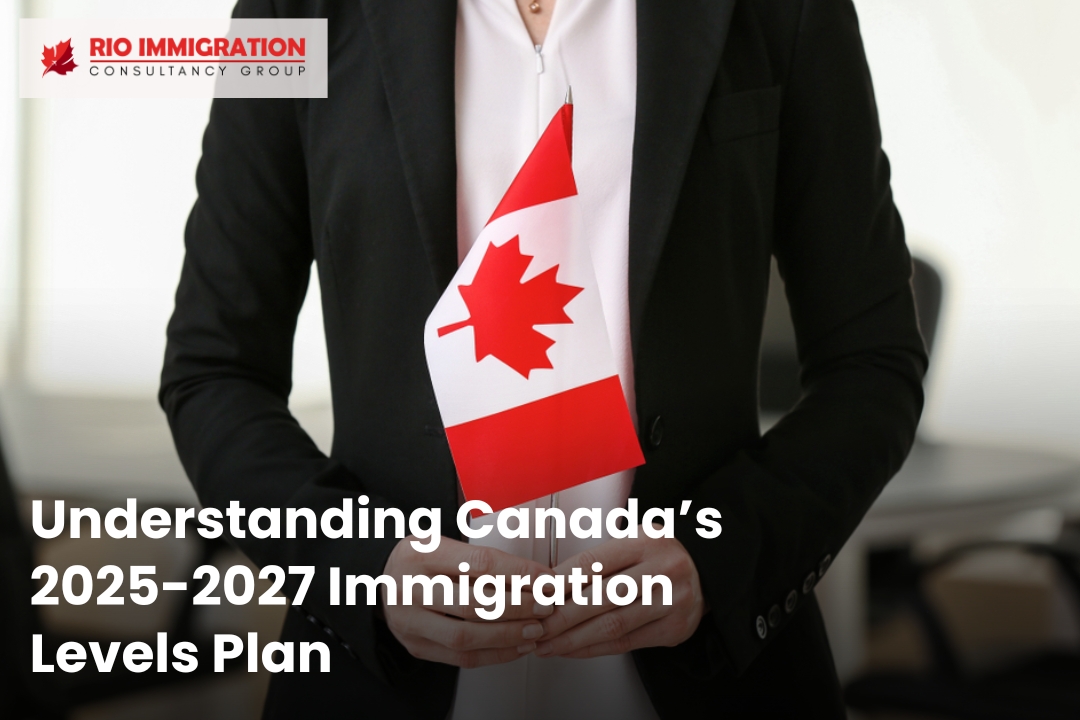
As Rio Immigration’s immigration consultants, we think it’s critical to keep you updated on the most recent regulations affecting your immigration process. Immigration, Refugees, and Citizenship Canada (IRCC) released the 2025-2027 Immigration Levels Plan on October 24, 2024, providing a three-year strategic plan. The strategy addresses both temporary and permanent immigration targets for the first time, guaranteeing a more comprehensive response to Canada’s social and economic demands. We go into more depth about these categories below.
Temporary Residents
Under this approach, Canada seeks to control the number of temporary foreign workers and international students it accepts by setting clear goals. The government hopes to meet labor demands without placing an undue strain on community resources by establishing more precise guidelines for temporary programs.
1. Targets for Temporary Arrivals:
– 673,650 new arrivals in 2025
– 516,600 new arrivals in 2026
– 543,600 new arrivals in 2027
A major portion of new temporary entrants will be International Students, who will account for 45% in 2025, 59% in 2026, and 56% in 2027. Stricter guidelines, such as study permit limitations and modified cost-of-living standards, however, show the government’s efforts to control these figures.
2. Temporary Foreign Workers (TFWs):
Workers covered by the International Mobility Program (IMP) and the Temporary Foreign Worker (TFW) Program fall under this group. Adjustments are being made to conform to market realities, even if TFW programs—particularly agricultural streams—continue to be emphasized in order to preserve economic stability. To make the system more efficient, seasonal employees are not included in the long-term goals.
Permanent Residents
Economic immigration continues to be a major part of Canada’s goal for permanent immigration. Nonetheless, the government wants to progressively lower the number of admissions for permanent residents from 395,000 in 2025 to 365,000 by 2027.
1. Economic Category:
Financial immigrants will account for over 62% of admissions by 2027. To address severe labor shortages, Canada gives special attention to jobs in the healthcare industry, skilled crafts, and for Francophone workers. Express Entry and similar programs will keep developing, with new categories that meet the demands of the labor market. Additionally, preferential avenues to permanent residency will be provided to TFWs and international students who are currently in Canada.
2. Family and Refugee Programs:
To guarantee family reunion, 22% of all permanent admissions will remain in the family category. The government will continue to uphold its commitment to international humanitarian obligations by admitting 15% of all permanent residents as refugees or protected persons.
3. Francophone Immigration Targets:
Canada wants to raise the proportion of French-speaking immigrants outside of Quebec from 8.5% in 2025 to 10% by 2027 in order to foster linguistic variety.
Important Changes in Policy
The IRCC has proposed a number of policy modifications to preserve a balanced system, including:
– By 2026, the number of temporary residents in Canada should be limited to 5% of the total population.
– Modifications to work permits for spouses of temporary residents and Post-Graduation Work Permits (PGWP).
– Changes to low-wage TFW streams to make sure they meet labor demands.
By demonstrating a move towards sustainability and integration, these policies make sure that immigration laws continue to be sensitive to the demands of the Canadian economy as well as immigrants.
An important step in coordinating Canada’s immigration policy with long-term economic and social objectives is the 2025–2027 Immigration Levels Plan. The plan provides clear avenues for workers, families, and students to establish a future in Canada while maintaining a balanced approach to temporary and permanent immigration. We at Rio Immigration are here to support you as you navigate these changes and make wise choices regarding your immigration path.


